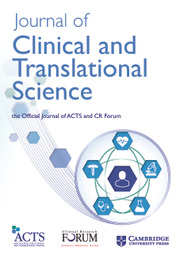No CrossRef data available.
Article contents
62 Sleeping safely? Examining changes in infant sleep practices during and after illness
Published online by Cambridge University Press: 11 April 2025
Abstract
Objectives/Goals: Unsafe sleep practices contribute to sleep-related infant mortality, a leading cause of preventable sudden unexplained infant death (SUID). Infant illness represents a risk for SUID. However, the mechanism behind this increased risk is unknown. The objective of this study was to measure changes to safe sleep practices during infant illness. Methods/Study Population: We performed a prospective cohort survey study of infants aged 0–12 months presenting to the pediatric emergency department. We assessed sleep practices prior to illness, during illness, and 2 weeks and 1 month following illness. We assessed adherence to American Academy of Pediatrics safe sleep recommendations at each point in time. Wilcoxon sign rank test was used to examine changes between time points. Regression models compared caregivers who reported a change to unsafe sleep practices with those who did not. Results/Anticipated Results: Of enrolled participants (n = 142), 110 (77%) completed all three follow-up surveys. For those with complete follow-up, 62.4% were female, 60.3% were Black, non-Hispanic, 25.7% were White, non-Hispanic. The most common chief complaint was respiratory illness (35.7%), followed by fever (22.7%), and 70.3% of patients were discharged home. Across all sleep behaviors surveyed, caregivers reported, on average, a 12% change to unsafe sleep practices during illness. These changes were sustained at the 2-week and 1-month follow-ups. Factors associated with a change to unsafe sleep practice were parental age. Discussion/Significance of Impact: Over 10% of infants experienced a change to unsafe sleep practices during illness, sustained at 2-week and 1-month follow-ups. This may explain the association of infant illness with SUID. Interventions promoting safe sleep adherence during illness are key to decreasing sleep-related infant mortality.
Information
- Type
- Biostatistics, Epidemiology, and Research Design
- Information
- Creative Commons
- This is an Open Access article, distributed under the terms of the Creative Commons Attribution-NonCommercial-NoDerivatives licence (https://creativecommons.org/licenses/by-nc-nd/4.0/), which permits non-commercial re-use, distribution, and reproduction in any medium, provided the original work is unaltered and is properly cited. The written permission of Cambridge University Press must be obtained for commercial re-use or in order to create a derivative work.
- Copyright
- © The Author(s), 2025. The Association for Clinical and Translational Science

